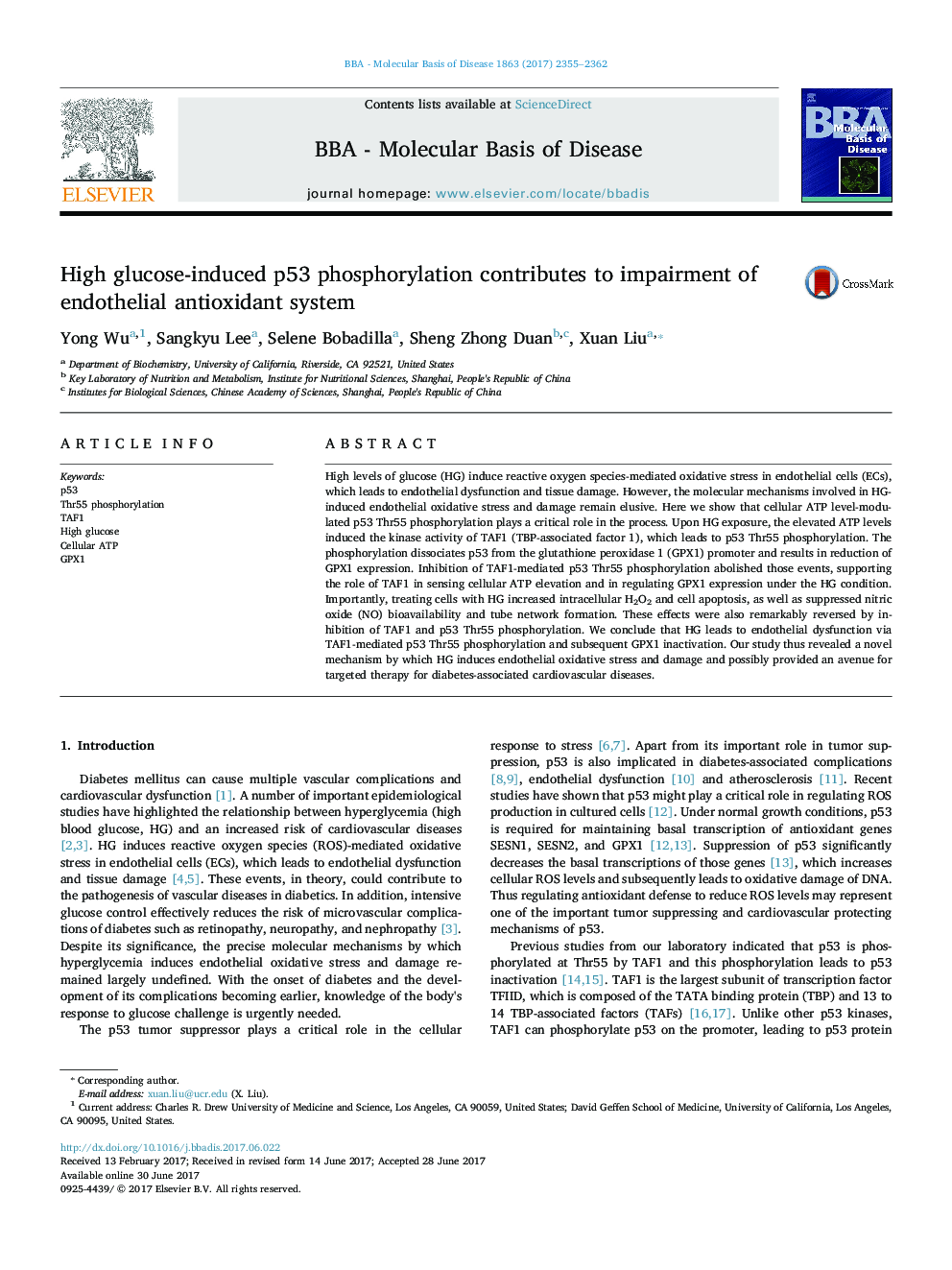| Article ID | Journal | Published Year | Pages | File Type |
|---|---|---|---|---|
| 5501008 | Biochimica et Biophysica Acta (BBA) - Molecular Basis of Disease | 2017 | 8 Pages |
Abstract
High levels of glucose (HG) induce reactive oxygen species-mediated oxidative stress in endothelial cells (ECs), which leads to endothelial dysfunction and tissue damage. However, the molecular mechanisms involved in HG-induced endothelial oxidative stress and damage remain elusive. Here we show that cellular ATP level-modulated p53 Thr55 phosphorylation plays a critical role in the process. Upon HG exposure, the elevated ATP levels induced the kinase activity of TAF1 (TBP-associated factor 1), which leads to p53 Thr55 phosphorylation. The phosphorylation dissociates p53 from the glutathione peroxidase 1 (GPX1) promoter and results in reduction of GPX1 expression. Inhibition of TAF1-mediated p53 Thr55 phosphorylation abolished those events, supporting the role of TAF1 in sensing cellular ATP elevation and in regulating GPX1 expression under the HG condition. Importantly, treating cells with HG increased intracellular H2O2 and cell apoptosis, as well as suppressed nitric oxide (NO) bioavailability and tube network formation. These effects were also remarkably reversed by inhibition of TAF1 and p53 Thr55 phosphorylation. We conclude that HG leads to endothelial dysfunction via TAF1-mediated p53 Thr55 phosphorylation and subsequent GPX1 inactivation. Our study thus revealed a novel mechanism by which HG induces endothelial oxidative stress and damage and possibly provided an avenue for targeted therapy for diabetes-associated cardiovascular diseases.
Keywords
Related Topics
Life Sciences
Biochemistry, Genetics and Molecular Biology
Ageing
Authors
Yong Wu, Sangkyu Lee, Selene Bobadilla, Sheng Zhong Duan, Xuan Liu,
